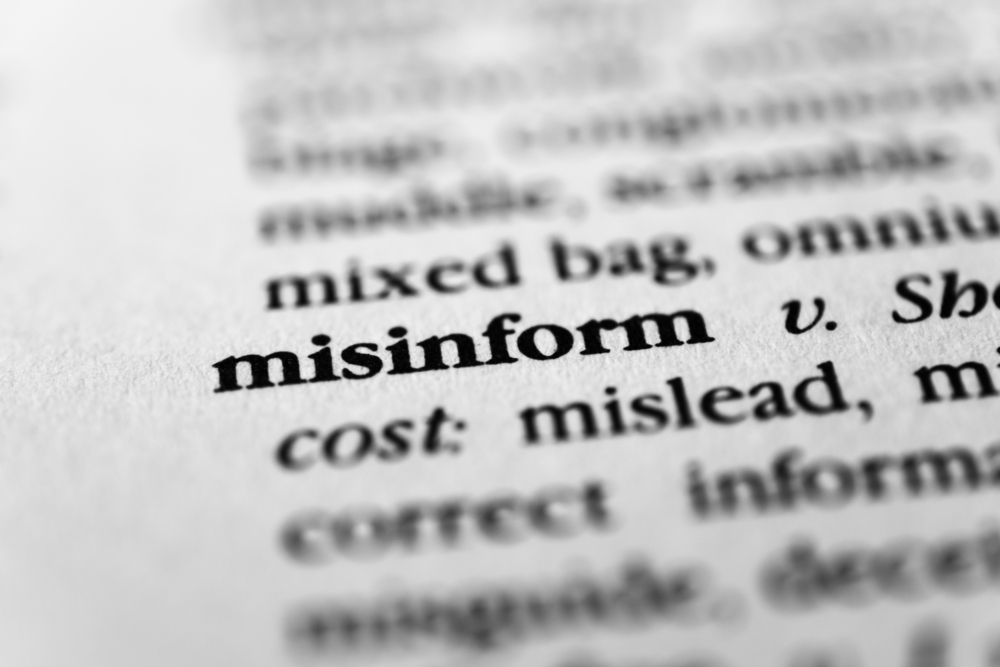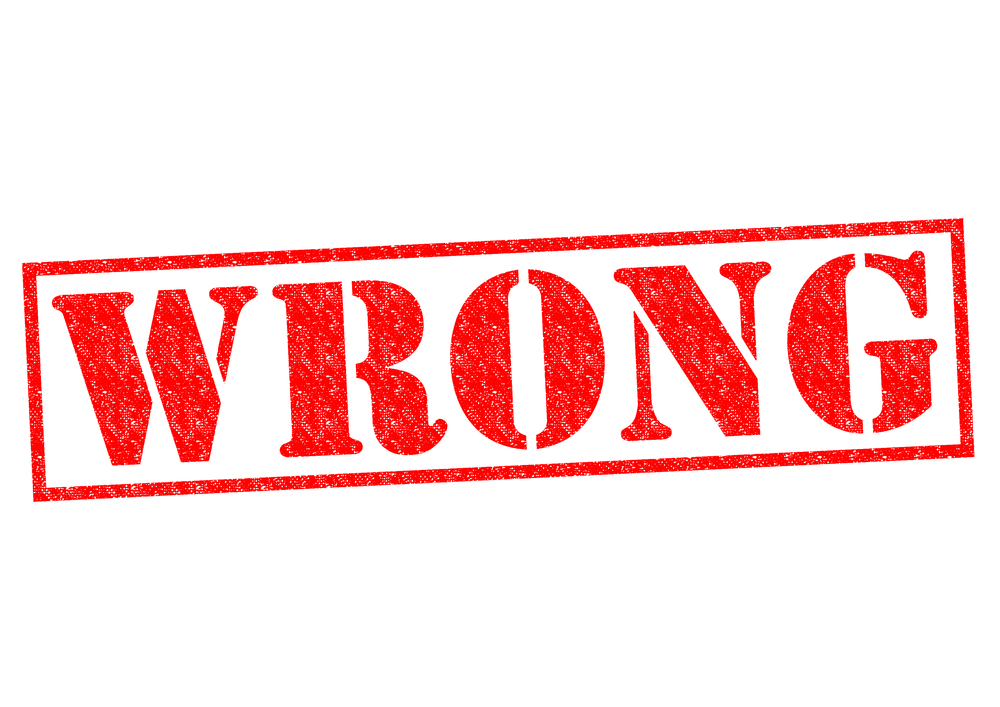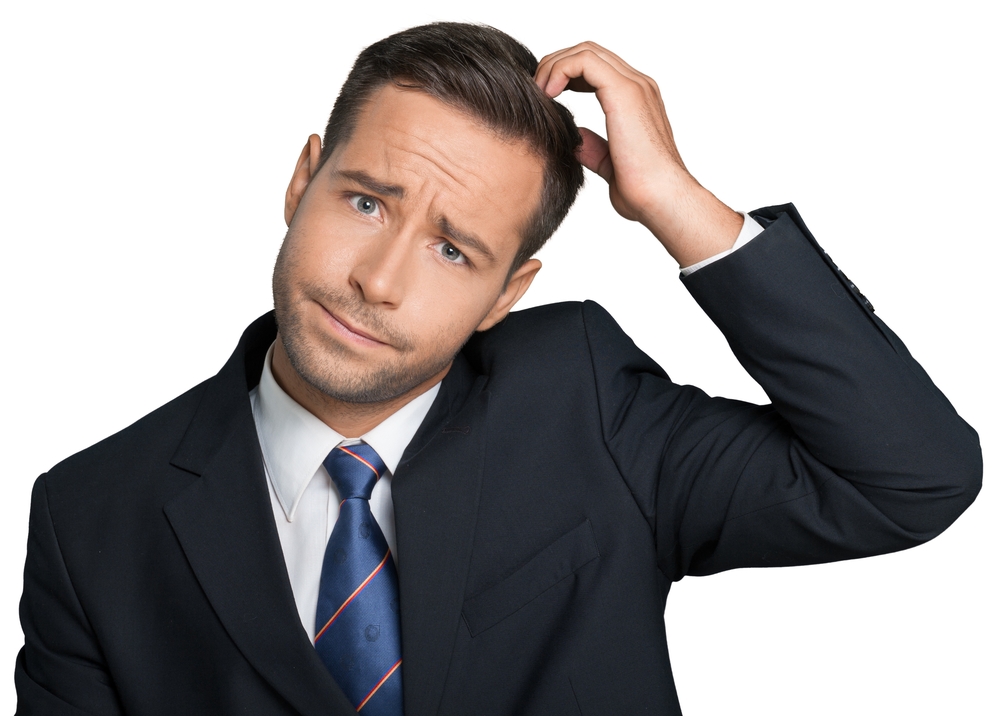All posts by NFI Media
MSN Misses the Mark on Mercury
MSN currently features a highly misleading article by Grant Stoddard of BestLife [“The 40 Unhealthiest Foods if You’re 40+”, November 19, 2016.) It peddles in dangerous falsehoods about tuna consumption, and appears to come from an unvetted source with no track record of credible writing on nutrition.
When Mr. Stoddard writes about albacore tuna as being “high in mercury” and “could lead to cognitive decline” he is directly contravening both federal guidelines and the scientific consensus. The Food and Drug Administration (FDA) sets limits for mercury in seafood at 1.0 parts per million (ppm). This limit includes a ten-fold safety-factor built in, meaning a fish would have to exceed 10.0 ppm to approach levels of concern. According to the FDA, the average can of albacore has 0.35 ppm and the average can of light contains 0.1ppm. This important perspective is left completely out of this reporting.
If that mercury limit were a speed limit, light tuna would be traveling 5.5 mph in a 55mph zone and albacore would be traveling 16.5 mph. Both demonstrably safe and healthy.
In fact, the Dietary Guidelines for Americans 2015-2020, produced by the U.S. Department of Agriculture, recommends Americans eat at least two servings of seafood per week. They also specifically recommend tuna as a healthy option.
Stoddard’s article ignores these facts, and contributes to the dangerous notion that nutritious, affordable, and accessible seafood sources like canned tuna should be avoided based on ancient and over blown mercury fears. This isn’t an inconsequential error. Unnecessarily scaring consumers away from seafood contributes to an ongoing public health crisis that contributes to 84,000 preventable deaths each year according to Harvard University research.
Watch this space to find out if MSN decides to correct the record or if they’ll let poorly researched misinformation stand as nutrition advice.
A mixed bag of reporting from the Washington Post
The Washington Post features what it calls “A user’s guide to buying seafood” today. And they get… some of the story right.
They’re spot on when they write:
- “Do you avoid seafood for fear of contaminants, such as mercury and PCBs? Those fears are largely unfounded, experts say.”
They hit the nail on the head when they note:
- “One thing not to do is move away from the fish counter because you’re in fear, which is certainly understandable with all the information swimming around.”
They’re in lock step with science when they announce:
- “Many studies have concluded that the benefits of the Omega-3 fats in seafood outweigh the potential harm from contaminants.”
Bucking the trend of inaccurate hyperbole they nail it when they ask:
- “Should you buy wild or farmed seafood? It may not really matter, since both are safe to eat.”
But the column’s weaknesses include the fact that the author identifies an “unwillingness to experiment with something new” as the “problem.” “The problem” that should be addressed from a public health perspective is American don’t eat enough seafood. While Americans eat 15.5lbs of seafood a year they eat 70lbs of red meat.
Your average cardiologist isn’t particularly worried about a lack of variety in America’s seafood diet but they are concerned that Harvard researchers have found low omega-3 intake to be the second biggest dietary contributor to preventable deaths in the U.S, taking 84,000 lives per year.
The column finds fear of things like PCB’s in fish to be “largely unfounded.” Yet makes suggestions about how those who are “concerned about contaminants” can avoid them in seafood. This would have been a great opportunity to dispel the myth of PCBs in fish for that confused and concerned population rather than playing into the fears.
Independent, peer-reviewed research from Harvard University, published in the Journal of the American Medical Association, reports seafood broadly makes up only 9% of the PCBs in the average American diet, while products like vegetables make up 20%. No health professional is suggesting people eat fewer vegetables.
Columns that help Americans eat more seafood are a benefit to public health and this one will certainly help some head in the right direction. But hand-wringing over “consumer confusion” followed by a multitude of lists to consult and apps to download actually contributes to the problem. Americans are hardly eating enough seafood to realize the benefits let alone introduce harm.
Did you know the FDA’s own research finds pregnant women can eat 164 ounces of light canned tuna a week without introducing risk? That’s 41 tuna sandwiches a week. Hope you’re hungry mom.
A Washington Post column once tackled this issue before and concluded “the best advice is simply to eat fish; the data show that the benefits outweigh the risks.” Simple and straight forward.
An Accurate Tilapia Tale
Tilapia has a storied history as a healthy, affordable whitefish that has grown exponentially in popularity in recent years. But with its meteoric rise has come a torrent of misinformation. Even for an unassuming seafood staple the axiom; heavy is the head that wears the crown, holds true.
Today’s edition of The Bulletin features an interesting look at the nutritional profile of Tilapia and the distortions that so often accompany reporting on the fish. Here is a case where a reporter actually probed the hyperbole so often printed about Tilapia and came up with a much different and more accurate perspective.
The expose’ finds:
- Nutritionists are frustrated by the lingering negative opinion of Tilapia.
- Experts find, “It’s a very nutritious fish.”
- The nutritional comparison of Tilapia to bacon is derided as “ridiculous.”
- Healthcare providers say dietary misinformation about Tilapia is “scare-mongering of the worst sort.”
In addition to debunking some of the more absurd claims about Tilapia, the story helps examine healthy fats and even aquaculture. It’s worth a read.
Science Based Perspective on New Mercury Study
Recent reporting on a new study published in Environmental Science & Technology suggests mercury levels in Atlantic bluefin tuna have decreased during a similar period of time when mercury levels in north Atlantic waters also dropped.
Reduced environmental mercury levels are good news but reporting on this study appears to have gotten a bit ahead of itself. The study examines a case of correlation, not causation. There are a number of factors that contribute to the mercury levels in fish including the size of the fish and age of the fish and the depth at which they feed.
While this study examines part of the mercury picture, there exists a larger body of studies on this topic that:
- “do not reveal measurable differences over time in methylmercury concentrations in commercial fish generally, nor does the FDA database reveal a trend toward increasing concentrations. Beyond the database, studies of museum samples of open ocean fish that included tuna and swordfish up to 90 years old (Miller et al., 1972; Barber et al., 1972) reported levels consistent with today’s levels. Conditions of storage, including the preservatives used to store samples, could have affected these results, however (Miller et al., 1972; Gibbs et al., 1974). In a more recent timeframe, methylmercury concentrations in Yellowfin tuna caught off Hawaii in 1998 were found to be essentially identical to those caught in the same area in 1971 – a span of 27 years (Kraepiel et al., 2003).” (2014 FDA Net Effect Report)
While interesting, this study is not relevant to the safety or healthfulness of the fish we eat with any regularity in the U.S. For starters the fish tested was Bluefin tuna. This specie is not canned tuna. In fact Americans, per capita, eat about the weight of a paperclip in Bluefin tuna annually. And the level of mercury in canned tuna remains not only unchanged but completely safe.
Light tuna contains 0.1ppm of mercury and albacore contains 0.3ppm. The FDA limit for mercury in fish is 1.0ppm. If that were a speed limit, light tuna would be traveling 5.5 mph in a 55mph zone and albacore would be traveling 16.5 mph. Both demonstrably safe and healthy.
Marketing the Mercury Myth: This Time on Shark Tank
For years we’ve been telling you about how the Safe Catch company mantra feeds into the mercury fear-mongering nonsense that anti-tuna activists have been peddling for years. And we’ve illustrated how their marketing pushes a solution in search of a problem. Well, they’re back and this time they’re on the popular TV show Shark Tank.
Perhaps on tonight’s show it would be better to focus on what they don’t tell you rather than what they do tell you.
- I’d venture to guess they will tell you: FDA’s limit for mercury in seafood is 1.0 parts per million (ppm.)
- I’d venture to guess they won’t tell you: The FDA’s limit includes a ten-fold safety-factor built in, meaning a fish would actually have to exceed levels of 10.0 ppm to even approach concern.
- I’d venture to guess they will tell you: Their tuna has mercury levels below .1 ppm.
- I’d venture to guess they won’t tell you: According to the FDA, the average canned light tuna has mercury levels of 0.128 ppm.
- I’d venture to guess they will tell you: Their tuna is “healthier.”
- I’d venture to guess they won’t tell you: The FDA’s Net Effects Report, based on 10 years of peer-reviewed published science, found that pregnant women could safely consume 164 ounces of canned light tuna and 56 ounces of canned albacore tuna every week. And that’s regular old canned tuna, not some expensive brand that makes low mercury claims.
- I’d venture to guess they will tell you: Their tuna has the “lowest mercury.”
- I’d venture to guess they won’t tell you: If the 1ppm FDA limit is akin to the 55 MPH speed limit then run of the mill, regular old Albacore Tuna is going 16.5 MPH and normal Light Tuna is going 5.5MPH. What exactly are they protecting consumers from?
If marketing is able to convince American shoppers to pay more for a product that is no different before or after testing, perhaps science can convince them that the lightness in their wallet counts as weight loss.
The Dr. Oz Misinformation Machine Turns to Farmed Salmon
Dr. Oz has a shocking history of getting important nutrition and medical advice wrong. In fact, he even has the distinction of having been called on the carpet by Congress over his absurd prognostications and selling what can only be described as snake oil:
Washington Post: That time Congress railed against Dr. Oz for his ‘miracle’ diet pills
CNN: Congressional hearing investigates Dr. Oz ‘miracle’ weight loss claims
ABC News: Dr. Oz Scolded by Senators for ‘Miracle’ Weight Loss Claims
His failure to employ real experts and glean accurate nutrition information for his viewers now extends to farmed salmon.
On The Dr. Oz Show today he’s talking about farmed salmon and rather than turning to actual aquaculture experts, involved in fish farming for a living, Dr. Oz turns to a food critic who writes books about “faked food,” Larry Olmsted. When Dr. Sanjay Gupta investigated farmed salmon for the CBS show 60 Minutes, he called on doctors and dietitians in addition to experts like Ian Roberts from Marine Harvest. Dr. Gupta’s thorough exploration came to a much clearer conclusion and one that stands in contrast to Dr. Oz’s hyperbole.
For starters, Dr. Oz embarrassingly marginalizes his already marginal credibility right off the bat with this exchange:
Olmsted: The good news is the farmed salmon does contain at least as much of the omega-3’s, the good stuff, as the wild salmon.
Dr. Oz: It does?
Olmsted: Sometimes more.
Dr. Oz: Why is that? I would think it would have less because they’re not, the farmed salmon, are not eating the krill and the shrimp.
Olmsted: Um… it’s added in, it’s built into their feed.
Dr. Oz: I guess there’s more fat in the salmon as well when it comes as farm raised. That’s… because we’ve been telling our viewers that the omega-3 content is quite different but it’s not?
Olmsted: It’s not. It’s at least as good in the farmed.
Don’t underestimate how damaging that overt admission by Dr. Oz is. He says, on national television, that a core claim about farmed salmon that he has made over and over to his audience is just plain wrong.
Despite the fact that it’s Olmsted who corrects Dr. Oz, his presentation is primarily not a science-based effort and he does allow Oz and his producers to perpetuate inaccuracies. For instance, the idea that farm raised salmon are “dyed.” Dr. Oz compares salmon feed to “self-tanning supplements.” Interestingly on 60 Minutes Dr. Sanjay Gupta’s investigation came to a different conclusion:
- “It’s not accurate to call these artificial dyes. I think people conjure up this image of the farmed salmon being injected with something that causes it to turn that pink color. That’s not what’s happening here. It’s a much more natural occurring process where the farmed salmon eat a type of food that causes a reaction in the body, just like the wild salmon does, and that causes that more pinkish color.”
Oz’s overwhelmingly skeptical chronicle of farmed salmon stands in stark contrast to the 60 Minutes piece, where Dr. Gupta says:
- “There are people who say I only order wild salmon—I guess the question would be, why are you doing that? If you’re doing it because you think it’s better for your health, for health reasons, you’d have a hard time makin’ that case.”
Despite Oz’s own unfavorable narrative about farmed salmon, Todd Mitgang, Executive Chef of Crave Fishbar, is featured on the very same episode saying,
- “I think farmed salmon, aquaculture, is finally here. Years ago when I was selling seafood I probably never would have looked at farmed products. Now farmed salmon is a product I can look to for consistency, for quality and it’s sustainable.”
To attract viewers Oz needs a controversy, he needs shock and aw, even outrage. When he doesn’t have that he works hard to manufacture it and despite his colleague’s analysis, sound science and even his own guests, he takes aim at farmed salmon and produces a show that contradicts, confuses and confounds… not the sign of a well-meaning doctor.
The Latest In Fukushima Misinformation
Scientists, researchers and nuclear experts from around the globe have investigated the impact of the nuclear incident in Fukushima Japan following the tsunami there and time and time again have concluded that the effect on commercial seafood has been essentially negligible.
Here’s a Washington Post report that finds the probability of contamination in seafood from Fukushima “was nearly zero.” The Seattle Times reveals, “testing finds no nuke disaster radiation in Alaska seafood.” Research from the Woods Hole Oceanographic Institution confirms trace levels of radiation found on North America’s west coast are “well below internationally established levels of concern.” And on and on it goes. Month after month, year after year, expert after expert, from the World Health Organization (WHO), to the International Atomic Energy Agency (IAEA), to the UN Food Agriculture Organization (FAO) the risk from commercial seafood is debunked.
But that doesn’t stop uninformed, hyperbolic pronouncements from being made by voices that are wholly ignorant of the science. In some cases, like the latest case, it’s not merely ignorance it’s outright deception that drives an inaccurate fear narrative.
 This image, generated by the National Oceanic and Atmospheric Administration (NOAA), is being misrepresented as radiation contaminating the entire Pacific Ocean. That is not what the image depicts. It is a representation of wave energy from the tsunami, not radiation. Websites that claim this is NOAA’s illustration of radiological contamination are just plain wrong. But beyond just being wrong they are actively deceiving their readers and promoting misinformation.
This image, generated by the National Oceanic and Atmospheric Administration (NOAA), is being misrepresented as radiation contaminating the entire Pacific Ocean. That is not what the image depicts. It is a representation of wave energy from the tsunami, not radiation. Websites that claim this is NOAA’s illustration of radiological contamination are just plain wrong. But beyond just being wrong they are actively deceiving their readers and promoting misinformation.
For the latest in accurate, independent, third-party information visit FukushimaFishFacts.com
Forbes: Something Fishy, GOP Picks Bureaucracy Over Small Business?
By Kim Gorton
Ms. Gorton is the President and CEO of Slade Gorton, a Massachusetts based seafood company. She is third generation to run the company.
Since May, House leaders have tabled a Senate resolution that would end a wasteful and duplicative Agriculture Department program designed, on the surface, to regulate catfish. Beneath said surface, where such bottom dwellers often congregate, is a special interest-driven boondoggle that reveals a costly tale of misused tax dollars and protectionism. The program is a regulatory switcheroo that sees USDA take over catfish regulation from the Food and Drug Administration, which already inspects all seafood, and in the process erects a trade barrier to imported catfish competition. It’s a scam detailed in 10 separate Government Accountability Office reports.
Unfortunately Speaker Paul Ryan and House Majority Leader Kevin McCarthy appear to have slept through the catfish debate to the point of failure. They have received directives from both chambers on this issue: the Senate’s majority vote as well a recently submitted letter signed by 220 members of the House calling for the opportunity to bring this matter to the floor. In the face of clear political will, Ryan and McCarthy’s inaction repeats a message that I and American business owners have heard far too often from Congress: Sorry, lady, we’re busy.
Guess what? We’re busy too, powering the American economy and feeding people. As a mother, a CEO and Republican in Massachusetts, I have faced more than a few instances of stubborn insolence but this one adds nonsensical to the list of apropos descriptors.
Busy? Are Ryan and McCarthy too busy to repeal a program that forces seafood companies to face costly regulation from both FDA and USDA? Too busy to get rid of a program that threatens to eliminate almost 30% of the wholesome, affordable white fish supply in the U.S. and American jobs along with it? Too busy to protect the production of more than 1 billion reasonably priced meals for low to average-income Americans, at a time when the government itself is telling all Americans to eat more fish?
Ryan and McCarthy are too busy? Perhaps voters are too fed up to support them and the gridlock they campaign so fervently against but embrace when it’s politically expedient.
In an election year, vulnerable Republicans would show wisdom in eliminating an unneeded program that costs taxpayers $200 million over a decade. The GOP’s purported champions of responsible government can easily bring action and axe a regulation that embodies unhinged federal spending but its own leadership is standing in the way. The House has demonstrated that it has the votes to get rid of the program. Ryan and McCarthy have only need to do the math, or they can find out the hard way that delayed votes in the House and a full-on embrace of business as usual in Washington adds up to lost votes at the polls.
The ramifications of the USDA catfish program are far-reaching and will not stay a hometown embarrassment. Vietnam, the largest producer of the catfish species known as pangasius, exports hundreds of millions of pounds of the fish to the United States each year. Accounting for 2% of Vietnam’s Gross Domestic Product, foreign catfish will experience a total ban under USDA purview. Rather than undergo the USDA’s lengthy, unnecessary and byzantine import equivalency process, Vietnam will instead file suit with the World Trade Organization where they will win, according to the former Chief Judge of that body. In a letter to Speaker Ryan, the judge wrote that this case, “stands out for the egregiousness of its inconsistencies with WTO obligations.” Writing further that, “nothing good can result for the United States from applying the catfish measure.” The USDA program amounts to a trade barrier serving to protect only two southern catfish companies.
The Senate took a hard look at this program and saw wasted tax dollars and disadvantaged American businesses and did something about it, voting to get rid of it. They served that vote up to a willing House where a clear and bipartisan majority is asking to be allowed to do the same. But inexplicably, the leadership that should be standing up for taxpayers and business has chosen to listen to a special interest lobby that represents, of all things, catfish producers.
The tumult we see inside the Republican Party is beginning to make sense when we see House Leadership choose big government and bureaucracy over taxpayers and small businesses.
Oceana on Fish Fraud: Make New Laws, Don’t Just Enforce Ones We Have?
Oceana’s latest report on seafood fraud is hardly garnering the type of coverage its previous efforts have but that doesn’t mean it’s filled with any less misleading hyperbole. Let’s get to the facts and put some real perspective on the group’s handwringing.
Mislabeling is fraud and fraud is illegal, period. That’s why NFI members are all required to be members of the Better Seafood Board, the only seafood industry-led economic integrity effort. Our members are at the forefront of getting rid of fish fraud.
Any suggestion that Oceana’s study finds 20% of all seafood is mislabeled globally is incorrect. 20% of the seafood they looked at, which includes the most commonly mislabeled species, were mislabeled. You don’t go to the school library looking for truant kids, you go to the arcade. Oceana’s focus on the most often mislabeled species distorts its findings by design. It is a common technique that ironically perpetuates a fraud on the readers of these reports.
Oceana’s continued focus on expanded regulation illustrates a fundamental lack of understanding when it comes to fish fraud and what works in policing it. The laws, rules and regulations we need are already on the books. This is an issue of enforcement. Whether it’s the City Attorney in San Diego going after menu mislabeling or the U.S. Attorney’s office in North Carolina securing felony mislabeling convictions, investigation and prosecution is the answer, not more laws.
Oceana’s approach is akin to recognizing drivers are running a stop sign and simply putting up another stop sign, rather than enforcing the law already conveyed by the first stop sign. Oceana would do much more in helping to get rid of seafood fraud if it focused on lobbying for greater enforcement rather than a misguided effort to expand regulatory bureaucracy.
The FDA is in charge of fighting fish fraud and its focus on the issue has grown steadily in the past few years. In fact, regulators recently revealed the results of a two year DNA investigation that found 85% of the fish they tested at wholesale was labeled correctly. This work has given them the ability to focus on areas and even species where there are demonstrable challenges. This project, known as Fish Seafood Compliance and Labeling Enforcement or Fish SCALE, was awarded the Department of Health and Human Services “HHS Innovates Award” for outstanding success. To suggest regulators are not focused on the issue and ways to best use resources to fight it is simply incorrect.
When Oceana started work in the fish fraud area its efforts were welcome. As its strayed further and further from a clear, discernable goal of stopping seafood mislabeling, its efforts have begun to evolve into a distraction for those actually doing the real work in this space.
Has Oceana lost its way? Has it lost sight of its original objective? With this latest report the question becomes, what is Oceana’s goal?
Greenpeace: Return of The One-Trick Pony
Another Greenpeace publicity scheme prepares to end in failure and embarrassment. For the last several years, the global fundraising group had tried to create buzz for a makeshift top-ten list of sorts — ranking grocery retailers on seafood sourcing practices.
At first, it got a little coverage from their friends in the activist media. But after NFI alerted editors to some obvious problems in the methodology, media attention fell off a cliff. What sort of problems? First, the “survey” Greenpeace used with the retailers (read: the targets) was completely arbitrary and the underlying measurements hidden from view. Or to put it in journalism terms: fabricated. Second, those companies that responded in good faith to the survey were actually singled out for further abuse and hostility from Greenpeace.
Turns out that asking reporters to deceive readers and squandering donor money for zero results isn’t a very smart strategy.
So what did the geniuses at Greenpeace do next? They decided to use the exact same trick, but this time to go after foodservice companies, hoping for a different result. Greenpeace’s attempts to strong-arm retailers into agreeing with their unsubstantiated views on sustainability were an abject failure – and was finally scrapped after retailers realized the futility of responding to Greenpeace only brought on more attacks. Retailers began sitting quietly until the fundraising stunt was over – refusing to be part of the cycle of abuse. There was simply no upside to negotiating with activists who are happy to rake companies over the coals whether they cooperate or not.
Greenpeace is so busy with arbitrary rankings that they’ve never done a single environmental or economic impact study of the fishing methods they say they prefer. Methods, like pole and line fishing, which would require vastly more boats and greater fuel consumption. Meanwhile the tuna industry, for example, has worked for years with scientists and ocean experts, industry leaders, and fisheries champions to craft effective, enforceable, and verifiable sustainability practices – which is why bycatch rates are at historic lows.
But it’s been more than 1880 days since they were invited by the International Seafood Sustainability Foundation (ISSF) to participate in the ongoing dialogue about tuna fisheries and sustainability. Greenpeace refuses to join the grown-ups at the table to discuss real sustainability studies. This would clearly take too much time away from hitting donors up for cash.
Donors should take note of their failure to work seriously on sustainability issues and the myriad of legal, ethical, financial and reputational problems facing Greenpeace around the globe – from losing millions in donor money on financial speculation, to criminally desecrating the Nazca Lines, to facing an ongoing federal racketeering and fraud lawsuit. Can Greenpeace explain why foodservice companies should risk their professional reputation to work with them?
Greenpeace, after all, proudly states that it has “no permanent friends.” Which means that one capitulation is never enough. Greenpeace claims a victory, and fundraises off each win, but they inevitably come back—after a few months, or a few years—with a new round of attacks, demands and even standards.
Luckily, the example of Greenpeace’s failed retailer rank’n’spank is out there for all to see. The cost of “cooperating” far exceeds that of ignoring them all together, especially considering that traditional and social media coverage of their retailer-focused attacks diminished to the point of non-existence. Quite simply, Greenpeace is a one-trick pony.











